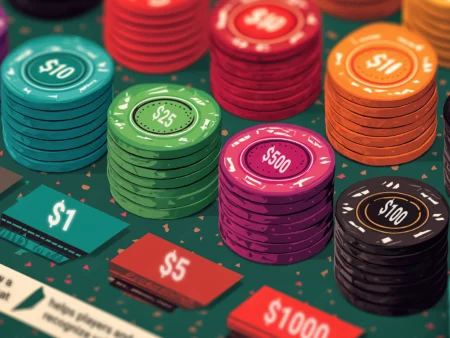You’ve seen it play out on TV, someone slow-rolls the river and scoops a mountain of chips. You finally sit down to play Texas Hold’em… and now you’re sweating over blinds, betting rounds, and whether two pair actually beats three of a kind.
Sound familiar? You’re not alone.
Texas Hold’em is easy to learn, brutal to master, and most guides make it harder than it needs to be. You don’t need a 3000-word rulebook. What you need is a straight-talking walkthrough from someone who’s played the game, built funnels for it, and knows exactly where new players get stuck.
This is your 5-minute crash course.
You’ll follow the flow of a hand, learn what actually matters, and skip the noise that clutters most “how-to” guides.
Let’s cut the jargon, skip the fluff, and get you playing like someone who belongs at the table.
Table of contents
- What Is Texas Hold’em? (And Why It’s the Most Played Poker Game in the World)
- Poker Hand Order, Know What Beats What First
- Texas Hold’em Rules, Step-by-Step Gameplay Breakdown
- Example Hand, Watch a Real Hand Play Out
- Key Tips for Beginners, Don’t Make These Classic Mistakes
- Pro Move for New Players:
- Need Help With Starting Hands?
- Want to practice while you learn?
- FAQ, Fast Answers to the Questions You’re Already Thinking
- Bonus: Want to avoid these beginner mistakes before they cost you?
- Ready to Hit the Virtual Felt?
What Is Texas Hold’em? (And Why It’s the Most Played Poker Game in the World)
Texas Hold’em is the most played poker variant in the world, and for good reason. It’s fast, strategic, and every hand feels like a mini mind game. The core mechanic is simple: you get two private cards (hole cards) and use them with five shared community cards to build the best five-card hand.
But here’s where it gets interesting, you’re not just playing your cards. You’re playing your opponents.
That mix of simplicity and psychological warfare is why Texas Hold’em rules dominate poker rooms, online sites, and high-stakes tournaments alike. From €/$ 1 home games to 100K€/$ heads-up battles, the Hold’em rules stay the same, and that consistency is part of the game’s global appeal.
It also strikes the perfect balance between luck and long-term skill. Sure, anyone can spike a lucky river. But over time, it’s the players who manage risk, control position, and read the table who come out on top. That’s the edge that keeps people grinding hand after hand.
You’re not just playing poker, you’re navigating a battlefield.
Poker Hand Order, Know What Beats What First
One of the fastest ways to lose chips in Texas Hold’em? Misreading the board and overplaying a mediocre hand.
Understanding poker hand order isn’t optional, it’s your foundation. Yet too many beginners bet the farm on two pair… only to get crushed by a sneaky straight or a quiet set.
Here’s the official hand ranking from strongest to weakest:

Common Rookie Mistakes:
- Thinking two pair beats three of a kind, it doesn’t.
- Misreading a coordinated board and missing a potential flush or straight.
- Forgetting the best five-card hand includes both hole cards and the board, not just your two.
Want to lock this in?
See all poker hands ranked to memorize the hierarchy, it’ll save you from making expensive calls when the pot’s on the line.
Texas Hold’em Rules, Step-by-Step Gameplay Breakdown
Now that you’ve got the poker hand order down, let’s walk through how a full hand of Texas Hold’em actually plays out, from the deal to the final showdown.
Whether you’re playing €/$ 1-€/$ 2 cash games or a high-stakes online MTT, the structure never changes. Here’s how it works:
1. The Deal & The Blinds (Start of the Hand)
Each player receives two private cards, your hole cards. These are yours alone. The rest of the hand plays out using shared community cards dealt face-up in the center.
But before the action starts, the two players to the left of the dealer post mandatory bets, known as blinds:
- Small Blind, Posted by the player immediately left of the dealer
- Big Blind, Posted by the next player; it’s typically double the small blind and starts the pot
Blinds rotate clockwise every hand, so everyone takes turns posting.
Example:
You’re in the big blind and you’re dealt K♦ Q♦. Nice.
2. Betting Rounds Explained
Each hand includes four distinct betting rounds. Let’s break them down with simple examples:
Preflop
Action starts with the player to the left of the big blind. You’ve seen your hole cards, now it’s time to decide:
- Fold, Throw your hand away
- Call, Match the big blind
- Raise, Increase the bet and apply pressure
Let’s say one player raises, two others call. You’re in the big blind with K♦ Q♦, strong enough to call. Let’s see a flop.
The Flop
Three community cards are dealt face-up. Everyone uses them to build their best five-card hand.
The flop comes: Q♠ 8♠ 4♣. You’ve got top pair with a strong kicker. Betting resumes, starting left of the dealer.
You check. One player bets, another folds. You call.
The Turn
A fourth community card hits the board. Let’s say it’s 2♦, not a threat.
You check again. Your opponent checks behind. The pace slows, but there’s still action coming.
The River
The final community card: 10♠. Now a flush is possible.
You bet for value. Your opponent snap-calls. Time to showdown.
3. Showdown & Winning the Pot
Both players reveal their cards:
- You: K♦ Q♦ (Top pair, king kicker)
- Opponent: J♠ 9♠ (Flush, thanks to the board)
They take it down. The best five-card hand wins, using any combination of hole and community cards.
What about side pots?
If a player goes all-in and others continue betting, the excess forms a side pot. Only players who contributed to that pot can win it, the all-in player is only eligible for the main pot. That’s a full hand of Texas Hold’em.
Simple in theory. Strategic in practice. And now, you’re ready to play one without guessing your way through it.
Example Hand, Watch a Real Hand Play Out
Let’s run through a real-world example of a six-handed online Texas Hold’em hand. This quick play-by-play shows how betting rounds, hand strength, and player decisions come together at the table.
Players:
- Alice (Dealer)
- Bob (Small Blind, €/$ 1)
- Carol (Big Blind, €/$ 2)
- Dave
- Erin
- Frank
Preflop:
- Alice folds.
- Bob has 7♦ 5♠ in the small blind, junk hand. He stays quiet for now.
- Carol (big blind) holds 10♣ 10♠, solid.
- Dave raises to €/$ 6 with A♠ Q♣.
- Erin folds.
- Frank calls with K♥ J♥, speculative, suited connectors.
- Bob folds.
- Carol 3-bets to €/$ 20 with her pocket tens. Great move, she doesn’t want to play it passively out of position.
- Dave calls. Frank gets out of the way.
Pot: €/$ 47
The Flop: Q♥ 9♣ 4♠
- Carol checks, playing it cautious with an overcard on the board.
- Dave hits top pair with his Q♣ and fires a €/$ 25 bet.
- Carol thinks it over… and calls.
Pot: €/$ 97
The Turn: 2♦
- Carol checks again, still unsure where she stands.
- Dave leans in with another €/$ 50 bet.
- Carol folds. Smart move. Without a read or improvement, she’s likely behind and doesn’t want to chase.
Dave scoops the pot with top pair, top kicker.
Breakdown:
- Dave’s early aggression set the tone and let him capitalize post-flop.
- Carol’s re-raise preflop was textbook, but her fold on the turn showed discipline, she avoided bleeding chips chasing hope.
- Frank’s fold post-3-bet saved him a lot of pain, speculative hands don’t play well against tight-aggressive lines.
Lesson?
Even solid hands like pocket tens can become trouble if you don’t control the pot or misread the board.
Meanwhile, playing strong hands fast and in position, like Dave did, keeps you in charge and puts pressure on opponents.
Key Tips for Beginners, Don’t Make These Classic Mistakes
You’ve got the Texas Hold’em rules locked in, you know the hand rankings, and you’ve seen how a hand plays out. But knowing the rules and playing well? Totally different ball game.
These are the four most common (and costly) mistakes that new players make, and how to avoid them.
Playing Every Hand Like It’s Suited Aces
Getting dealt A♠ 4♠ might look tempting, it’s suited, right? But calling a raise out of position with hands like J♥ 7♥ just because “they’re suited” is a one-way ticket to chip bleed.
Smart players fold more than they play.
There’s no prize for being in every hand, and Hold’em rules reward patience just as much as aggression.
Overvaluing Top Pair
Flopping top pair feels like you’ve hit the jackpot, until someone quietly flops a set. A hand like Q♠ 10♠ on a Q♦ 9♣ 4♥ board looks strong… but it can get expensive fast.
Top pair is good. It’s not great.
Always consider the board texture, number of players, and betting action. Don’t go broke with one pair in a multi-way pot.
Ignoring Position
Position isn’t just a detail, it’s the backbone of solid poker. Acting last gives you information. Acting early means you’re playing blind.
Most beginners treat A♣ 9♦ the same whether they’re first to act or on the button, big mistake. That hand might be worth raising on the button… and a fold under the gun.
Not Knowing When to Fold
This one’s a bankroll killer. Staying in the hand “because you already put chips in” or “just to see one more card” is how stacks disappear. Strong folds save money.
If the math, position, and read don’t line up, get out. There’s no shame in folding. It’s a sign you’re leveling up.
Pro Move for New Players:
Want more beginner strategy tips, advice on starting hands, and how to build a game that actually wins?
Check out our full How to Play Poker for Beginners guide, made for players who want to improve, not just survive.
Need Help With Starting Hands?
Let’s be blunt: if you’re playing 7♣ 2♦ and praying for a miracle flop, you’re just donating chips. Some hands aren’t worth the ride, and learning which ones to ditch before the flop is one of the fastest ways to improve.
Solid starting hand selection is what separates short-term luck from long-term consistency.
You don’t need to memorize a hundred combos to win. Just start by cutting out the junk and sticking to strong hands like:
- Premium pairs (A-A, K-K, Q-Q)
- Suited connectors (like 9♠ 10♠)
- Broadway hands (A-K, K-Q, Q-J, etc.)
And yes, position still matters.
That K♥ J♦ might be a fold under the gun, but a clear raise on the button. Later position means more information, and more control over the pot.
Want to practice while you learn?
Try the game risk-free on one of our trusted platforms with free cash bonuses.
FAQ, Fast Answers to the Questions You’re Already Thinking
We’ve all had that moment mid-hand when a question pops into your head, and no, asking the table isn’t always the smartest move.
Here are fast, no-fluff answers to some of the most common beginner poker questions we see at the tables and in search bars.
Yes, but mastering it takes time.
You’ll grasp the Texas Hold’em rules in minutes. But building a long-term edge? That means learning to read opponents, manage tilt, control bankroll swings, and fold when it hurts.
7♣ 2♦ (offsuit) is statistically the worst starting hand in Texas Hold’em.
It’s weak, disconnected, and rarely wins without help, which is why most players snap-fold it preflop. And so should you.
Yes. Whether you’re playing live or online, the deck is shuffled after every hand.
No memory tricks, no card tracking, poker isn’t blackjack.
It depends on how many players see the flop.
In casual games, one pair or two pair often takes it down.
In multi-way pots or loose games? You’ll see more straights and flushes at showdown.
Short-term? Luck. Long-term? Skill.
Anyone can hit a miracle river. But over thousands of hands, the best players win consistently, because they know the math, the mindset, and how to exploit weak spots.
Bonus: Want to avoid these beginner mistakes before they cost you?
Check out our How to Play Poker for Beginners guide, built for players who want real strategy, not recycled advice.
Ready to Hit the Virtual Felt?
You’ve got the rules. You know the hand rankings. You’ve seen how a real hand plays out.
Now it’s time to put that knowledge into action.
Practice what you’ve learned with free poker tools or sharpen your skills using our best live casinos.
Want to win more?
It starts with playing the right hands, the right way.
Check the cheat sheet, and make smarter moves, whether you’re grinding online or shuffling up with friends.
♠ Don’t just play. Play better.












































